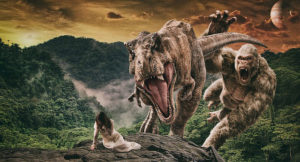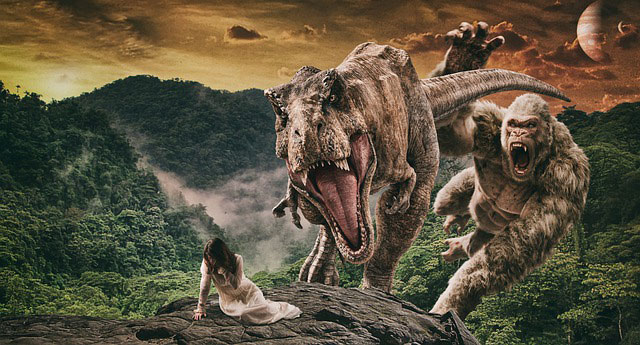Halloween took place just about a month ago, but we`re here with some spooky stories about monsters from another land. You might be surprised to find out that Japanese culture has given one of the most important cinematic concepts to the western world – the kaiju.
Kaiju – meaning and origin
So far so good. The main question that still stands, however, is what is a kaiju? Does it walk? Does it talk? Can you eat it? Yes, yes and no – the respective answers to those questions.
Kaiju (Japanese: 怪獣) can literally be translated as “strange beast”. The term refers to giant monsters, which are usually depicted as antagonists in movies, books and comics. They often destroy cities and threaten the world, and some of them find other kaiju to engage in battle with.
Although the term is considered to come from Japanese culture because of the whole genre of films that is named after it, it earlier appeared in the Chinese Classic of Mountains and Seas (compilation of mythic Chinese geography and beasts). The Japanese adopted it almost instantly after the isolationist foreign policy of the Japanese Tokugawa shogunate came to an end. This explains why there are almost no signs of kaiju in early Japanese legends and stories.
How did kaiju become so popular?
You might have not come across the term itself, but you have most definitely heard some of the big blockbuster names, which concepts are built entirely on kaiju. The first kaiju film in the west and one of the most famous of all time is the Godzilla. It is a Japanese production that later got the international appraisal it actually deserved and also served as a great inspiration for the further development of the kaiju concept in the movie industry.
Tomoyuki Tanaka, the producer of Godzilla aimed to combine the thrill of Hollywood monster movies with the re-emerged Japanese fears of atomic weapons, so he came up with the concept of a radioactive giant creature emerging from the depths of the ocean. Scary, huh?
What are some other examples in different industries?
 The concept of giant destructive beasts obviously appeals to many as it had been flourishing not only in the film industry. If you are a fan of Chinese or Japanese culture, you would know that anime and manga exploit the idea of kaiju quite often, as well.
The concept of giant destructive beasts obviously appeals to many as it had been flourishing not only in the film industry. If you are a fan of Chinese or Japanese culture, you would know that anime and manga exploit the idea of kaiju quite often, as well.
- King Kong (2005) is one of the nowadays recognized kaiju movies, which appears as a remake of the 1933 movie. King Kong is inspired by the Japanese Genshi Kaijū ga Arawareru (原子怪獣現れる), also translated as “The Beast from 20,000 Fathoms”.
- Cloverfield (2008) is another American blockbuster that is yet again inspired by a Japanese manga of the same name.
- Pacific Rim (2013) is an American science-fiction monster film directed by Guillermo del Toro that some argue is quite similar to the concept of the Japanese anime Evangelion.
- Attack on Titan (2015) is quite the big name among kaiju fans. There is a live-action movie and an anime based on the manga of the same name, written by Hajime Isayama.
Shortly, if you are a fan of apocalyptic concepts and the idea of giant monsters trying to destroy the world entertains you, then the kaiju genre is perfect for you!
